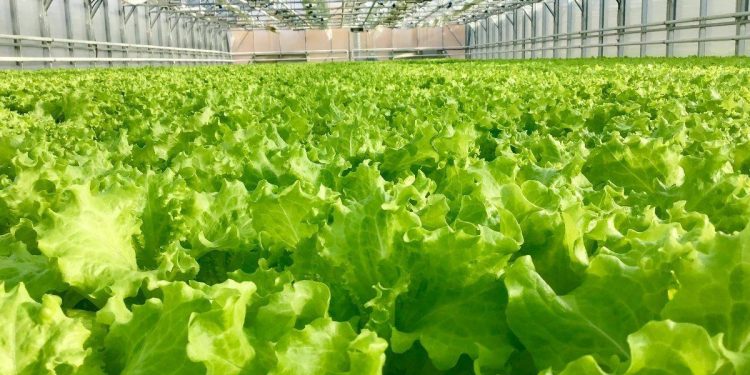Belarusian farmers are ready to increase their vegetable production for the domestic market. The unusually warm winter created conditions for an early harvest, but the excess of fresh produce caused issues with pricing and distribution. To address this problem, the Belarusian government is encouraging farmers to collaborate with local trading organizations to sell their surplus crops. Despite the challenges, modern automated greenhouses are proving successful in growing a variety of vegetables, including tomatoes and cucumbers, with the potential to expand their production.
According to recent news, the Belarusian government is taking an interest in supporting the country’s agriculture industry. In particular, the Deputy Prime Minister, Leonid Zayats, recently held a meeting with officials from the Ministry of Antimonopoly Regulation and Trade, the Ministry of Agriculture and Food, representatives from the Brest region, and local farmers to discuss ways to provide additional support to ensure that the country has sufficient vegetable production. The focus of the meeting was to encourage farmers to work closely with trading organizations to sell their excess produce in the domestic market.
One area where Belarusian farmers have a competitive advantage is in growing vegetables in protected soil, which allows for year-round production. For example, the town of Olshany in the Stolin district is renowned as the cucumber capital of Belarus, with a population of over 8,500 people. However, even with the latest greenhouse technology, the cost of heating during the winter months can make it challenging to produce vegetables at a competitive price. Nevertheless, some farmers have already begun to sell fresh produce, including tomatoes, to local trading organizations, such as KFH “Olshany-Dva,” which is headed by Nikolay Grib. The greenhouse uses modern automation technology and is ready to expand production if there is sufficient demand.
OAO “Teplichnyi kombinat “Berestye” is one of the largest agro-complexes in Brest, Belarus, which has been successfully cultivating crops for more than two decades. The 22.8 hectares of greenhouse space is home to several vitamin-rich crops such as cucumbers, tomatoes, sweet peppers, and eggplants. With the use of modern technology and innovation, the agro-complex has managed to increase its yield and quality of crops over the years. In addition to the use of LED lighting to cultivate seedlings, the complex also plans to add ten more hectares in the future.
According to Alexander Radkovets, the director of the complex, the first vitamin-rich cucumbers of the new harvest were obtained in December of last year. To address import substitution issues, cucumbers were additionally planted on an area of 0.8 hectares. By the beginning of March, the agro-complex had supplied more than 150 tons of their own crops to their stores and trading networks, with average-sized fruits being sold for 5 rubles per kilogram without VAT. Short-fruited varieties are sold for 6.54 rubles per kilogram, not including value-added tax.
The success story of the OAO “Teplichnyi kombinat “Berestye” is attributed to the use of modern technology, which has helped in reducing labor and energy costs while improving crop yields. As per Bronislav Chaikovsky, the deputy director of the complex, the use of LED lighting has been particularly helpful in cultivating seedlings as it not only speeds up the process but also saves on electricity. In addition, the complex also grows other crops such as green onions, zucchini, cabbage, beets, carrots, and even watermelons in open fields during the warm season.
Over the last four years, the production of vegetables in the Brest region has been on the rise, averaging around 246.5 thousand tons per season. With the use of modern technology and innovation, the yield of vegetables is expected to increase further. According to Anatoly Shchuplenkov, the head of the Committee on Agriculture and Food of the Brest Regional Executive Committee, the specialized agro-enterprises and farms in the region need to grow at least 252 thousand tons of vegetables and 170 thousand tons of potatoes this year.
In conclusion, the OAO “Teplichnyi kombinat “Berestye” has set an example for the agricultural industry in Belarus by utilizing modern technology and innovation to increase the yield and quality of crops. Their success story can serve as a motivation for farmers, agronomists, agricultural engineers, farm owners, and scientists who work in agriculture to adopt new and innovative approaches to crop cultivation.
Belarus faces a significant oversupply of vegetables compared to domestic demand, which creates a need to explore ways to optimize production and distribution. According to the recent meeting of the OJSC “DorORS,” the Prime Minister Roman Golovchenko has tasked the agriculture industry with exploring the most efficient and cost-effective methods of addressing the issue. One of the proposed solutions involves building modern greenhouses with supplementary lighting covering an area of about 30 hectares. Farmers in the Stolin region have expressed their willingness to cooperate in the project, while a logistics center for pre-sale preparation of products is also planned in the Polesie region.
The increasing supply of domestically grown vegetables in Belarus has not only broadened the variety of produce available but has also led to a decrease in prices. Recent observations at the central market in Brest revealed a 15-20% drop in vegetable prices over the past month. Cucumbers, depending on the variety, now range from 6 to 9 BYN per kilogram, while tomatoes are priced at 9 to 14 BYN per kilogram. Private sellers maintain a stable price of 1 BYN per kilogram for last year’s potatoes, with cabbage and table beets priced at 70-80 kopecks. The cost of fresh herbs such as onions, dill, and parsley starts at 1 BYN per bunch, while in retail stores, potato prices drop to as low as 68 kopecks per kilogram.
The arrival of spring in Belarus last week indicates an increasing supply of fresh vegetables from greenhouses and polytunnels, which will eventually lead to more affordable prices for consumers.












